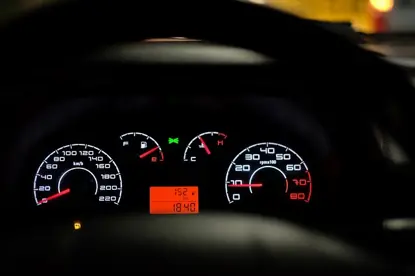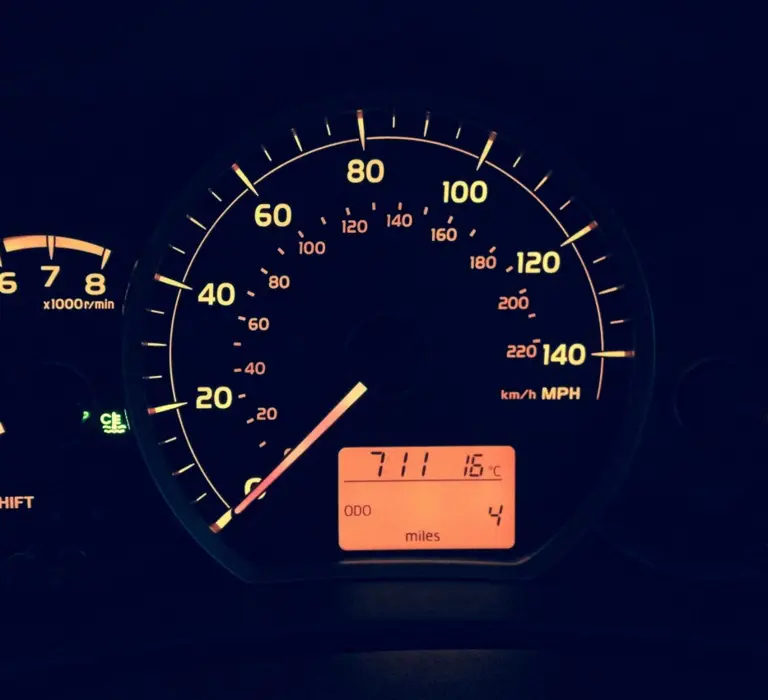The 0-62 mph time for a car has always been seen as a benchmark for a vehicle's performance and is listed in every personal lease and business lease configurator pages - specifically looking at the acceleration from a stop-start. But, have you ever taken the time to ponder whether or not this metric is relevant or even meaningful when deciding on whether to purchase or lease this car?
Well, this blogs aim is to take a look at the 0-62 metric and to explore how viable we think it is in the real world and how useful or irrelevant it may be when shopping for a new vehicle. As a side note, if you're here looking for the cars with the fastest acceleration scores then click here.
What is a 0-62 mph time?
Let's start by breaking down what exactly is the 0-62 mph metric.
A 0-62 miles per hour time is a measure of how fast, in seconds, a vehicle takes to reach 62 mph from a complete stop. The reason why it's 62 and not say, 60 or 65 is that 62 mph is essentially 100 kilometers per hour- a standard metric used in countries where kilometers are used over miles, such as the United States, however in Europe 0-62 is used exclusively. Throughout history, the 0-62 time has been used as a benchmark to showcase how fast a vehicle accelerates from a standing start.
In the past, manufacturers would use different distances and speeds to market their vehicles before an industry standard was set. However, unlike metrics such as miles per gallon, 0-62 times are unregulated and not held to an official standard - this means that manufacturers could actually list their vehicle's scores to whatever test they wanted. This is highly unlikely as they would inevitably be found out but it is worth nothing.

How do manufacturer's find the 0-62 time of a car?
A 0-62 time is conducted by the manufacturers themselves. How they determine the time can be different from one to another and even between models in the same stable. However, the general testing method for a 0-62 is on a test track on a clear day going from a stop start to exactly 62 miles per hour. They will generally conduct several tests and then calculate the average from the pool of results.
The way they clock it can differ; they may use more than one method seperately or at once - GPS sensors, the vehicle's own computer, in car stop watches and a radar guns are among a couple of examples.
At this point you might be thinking "When am I ever going to be able to do that with my car?", well, this is the exact reason for this blog - is 0-62 really relevant to someone who isn't a race driver with access to a race track?
Faults when it comes to 0-62 times
We feel that a 0-62 time can be misleading and perhaps a metric which should be used in conjunction with others but never in isolation. Here are some reasons why 0-62 can be unhelpful.
You will never recreate the conditions (legally)
Chances are, you will never ever recreate the conditions of the 0-62 mph test. The reality is, unless you are standing at traffic lights on a long straight stretch of road you will never be able to go from 0 to 62 mph legally. Most situations where you will be at a stop start will be urban areas or roads with speed limits of a maximum of 60. You will also need to have no traffic whatsoever. If your car has a time of 6.8s on a race track does it have any relevance to you?
Also consider that the road the car was on when doing the 0-62 test will have a specific race grade surface and asphalt. Public roads where your car will be on will be uneven and not in the best condition and definitely not suited for racing of any kind.
The tests were conducted by professionals
If the tested vehicle is a manual then you will need to be as good as the driver in the test to match the time they set. If the car is an automatic then it's likely to have been done in sport/race mode. How confident are you in your ability to drive as fast as possible with your car to be able to compete with the vehicles maximum capabilities?
It does not represent the experience of the drive
A 0-62 time is no substitute for the actual experience you're likely to get from the car. If your desire is to have a car that FEELS exciting then 0-62 time should not be the first consideration. As an example, an Audi A6 55 TFSI has a 0-62 mph time of 5.1 seconds while the Golf GTi Performance has a 0-62 mph of 6.2 seconds. The difference between them may only be 1.1 seconds but the Golf GTi Performance will FEEL faster and will be a much more entertaining drive as that's what it was built for. Type of suspension and engine tuning can play a huge part in a driver's experience and should not be underestimated.
So, when shopping around for a fast car consider whether you want it to feel the fastest or to actually be fastest.
When would you ever need to from 0-62 quickly
Going 0-62 mph flat out in any circumstance is dangerous, uneconomical and reckless. To even attempt doing it on public roads without proper driving training can put yourself and other road users in danger. With that being said, we would ask "What is the point of knowing what the 0-62 time is if I'm never going to do it".
On occasion, a quick boost of speed can help overtake safely and get out of the way of a potential accident. However, going full speed from stopping position is perhaps something no one would ever need to other than the emergency services.
So, consider this. The 0-62 mph time of your car was done on a race track and by a professional - how accurate do you now feel this statistic is? If you can never recreate this score is there any reason to consider it? A car's mpg statistic is something drivers can practice to achieve but the same can not be said for the 0-62.
How the 0-62 mph time should be used (in our opinion)
So, we've now got the faults of the 0-62 mph metric out of the way it's only fair that we list some of the positive ways it can be used to help you choose a car. By no means do we think 0-62 is a "pointless" metric, here's why:
Acceleration is important
A 0-62 mph time, when used as a benchmark, can help you decide whether or not the acceleration of the vehicle may suit your needs. If you are lucky enough to live and/or commute in an area with plenty of open road, little to no pedestrians and hazards and little traffic then a decent level of acceleration can lead to a much more enjoyable driving experience, especially in a vehicle which has sporty modifications such as a stiffer suspension.
Snappy acceleration also makes overtaking much easier and less risky as it can be done quicker (as long as you're within the limits of course). On rare occasions, a quick burst of speed can help the driver avoid an incoming hazard.
Our point here is that the shorter the 0-62 mph is the quicker the vehicle's acceleration is likely to be.
It can be used to compare two cars
We've mentioned earlier how an individual car's 0-62 mph is likely to be incorrect and impossible to duplicate. However, if you were to compare two cars together then the 0-62 time can be used to identify the vehicle with the quickest acceleration. However, if the difference between the two is minute, say a difference of 0.5 second or less, then this may be unreliable due to the differences in variables of these two vehicle's speed tests.
Get a car with similar performance to what you like
If you currently have a car with a reported 0-62 time of 8 seconds and you want a car which drives more or less the same then you can use the score of the prospective car to gauge the difference in performance. You can, of course, use it to make sure your next car will be quicker or slower also.
Should you use 0-62 when shopping for a car?
Yes, absolutely you should use 0-62 times when shopping for a car - regardless of our thoughts on how accurate it is or even the appropriateness of it it is still the only performance metric which attempts to measure acceleration. Used in conjunction with brake horsepower and top speed you can get a sense of how fast the vehicle is.
However, we don't think it should be used in isolation or even as a straight comparison with another vehicle as there are simply too many variables to consider. It also falls short in telling you what it FEELS to drive the car - for that you'll definitely need a test drive on an open and safe bit of road to really open the engine up.
Conclusion
A vehicle's 0-62 time is an interesting one to look at which is unlikely to be replicated but it can help people understand how fast a vehicle accelerates when used as a comparison with other cars.


